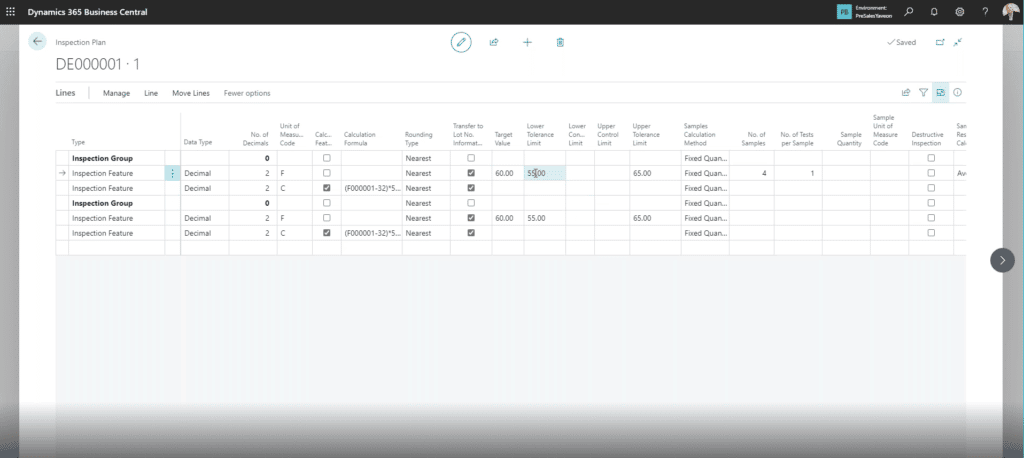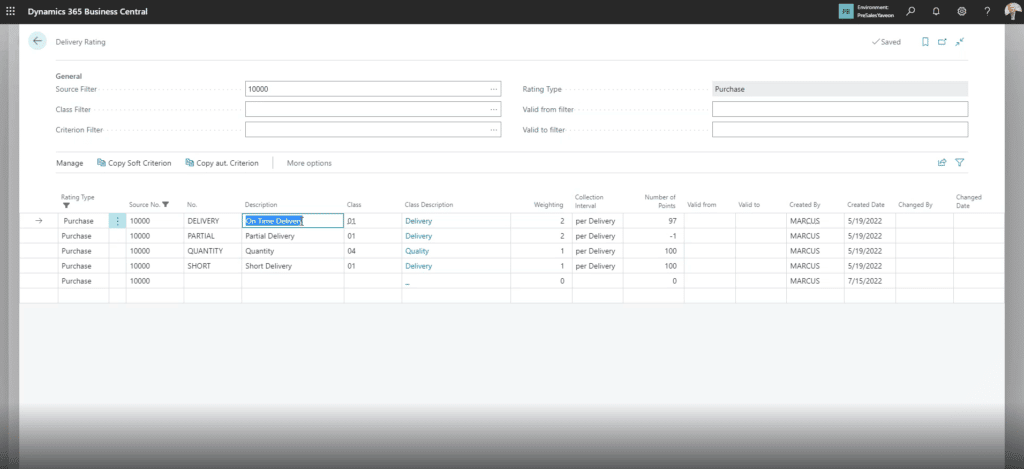How Dynamics 365 Business Central and YAVEON ProBatch Can Elevate Your Inspection Process
If you read the first part of this series, you already know Dynamics 365 Business Central and YAVEON ProBatch, when combined, can improve your Chemical Manufacturing process.
In Part 1, we showed you some of the features of combining these two solutions and how they can help you ensure your products are top quality before entering the distribution process.
In this post, we will show you how to use these features to develop an inspection process, ensuring you’re only sending top-quality products to your customers.
Using YAVEON ProBatch and Dynamics 365 Business Central to Map Your Inspections
First, you need to determine what you’re going to inspect. It could be individual items, group items, equipment, or something else. With YAVEON ProBatch, you can apply quality standards and set up inspections specific to vendor or customer groups. You can also define how stringent or relaxed those are, or tailor them uniquely to the group.
You can define the inspection headline based on the Item, Lot, or Serial Number.
Inspection Sources
This lets you identify exactly what you inspecting and when you are going to do it. It also lets you flag inspections throughout your process to determine when they will take place.
There are a number of Inspection Sources:
- Sales Cycle – This process allows you to track inspections based on when they take place within your sales process. It also lets you track inspections on return orders if you need to send a product back to a vendor or if a customer needs to send one back to you
- Production Order Cycle – This lets you perform inspections for a specific production order or during the production process
- Inventory Inspections and Stability Tests – Allows you to perform a one-off inspection of the goods sitting in your warehouse. For example, if you have something that has been sitting in your warehouse for a while but still might be good, you’d launch an Inventory Inspection. Meanwhile, Stability Tests allow you to inspect inventory on a regular basis (monthly, quarterly, etc.) You can also define specifications on what gets inspected. For example, you can specify that products will only be inspected if they’ve been in your warehouse for more than 30 days
- Transfer Order – You can perform an inspection once your goods go from one location to another. For example, maybe you sent a specific item from one of your warehouses to another and want to perform an inspection to ensure it wasn't damaged
Inspection Methods
If you have a specific evaluation that must be part of your inspection process, you are able to set parameters and restrictions around the end user’s ability to evaluate. You can also assign inspections to specific people who have the right training and certifications to complete them.
There are several inspection types you can define:
Target Value and Lower/Upper Control Limits
You can set a target value for your inspection and define upper and lower tolerance limits to ensure your product falls within a safe range. In the example above, we are inspecting temperature and need to store our chemical at 50, which means to pass the test it can’t exceed 45 or 55.
Samples Calculation and Samples Result Calculation
Depending on how you set your headline, this should automatically fill. However, you can also customize it to calculate an average, judge based on a minimum or maximum, or calculate the total sum.
Destructive Inspection
If you check this box on an item, it will be removed from your inventory because it did not pass the inspection. This typically applies to single units of solid materials that are knowingly not going to pass but can also be applied to liquid chemicals though. For example, if you are taking samples from a unit it will calculate a decrease in your inventory based on the size of your samples.
Print Sample Labels
Users can print labels to put on containers they ship to customers. These labels contain inspection numbers, lot numbers, item numbers, and purchase receipts. It serves as a confirmation to your customer that the product they bought passed initial inspections and identifies specific tests that lab techs need to run on it.
Output on Certificate of Analysis
As features are being evaluated, you can attach this information to the Certificate of Analysis, which is a report generated to confirm certain aspects of the product have been inspected.
One thing to note about Certificates of Analysis is they are documents created at a specific point in time. You might also create multiple specific Certificates of Analysis for different vendors, clients, and labs. This is important because some of your inspections might be ongoing or in need of constant monitoring. For example, the moisture content of a product might change if two warehouses it's stored in have different humidity levels. In that case, you have to create a new Certificate of Analysis for each inspection.
Then you can configure and customize your output and design, translate the report to another language, add comments, or header and footer text.
All of these combine to create an inspection order, which is then used by lab technicians and scientists who perform the inspections. The program automatically generates a document number and inspection order number and tells the lab what needs to be inspected and other important information.
Once you are done, your inspection order should look like this:
Manage Compliance with Dynamics 365 Business Central and YAVEON ProBatch
Now that you have defined what your inspection process is, you can now turn your attention to ensuring you follow all compliance rules. The following features can help you with that.
Change Log Transactions
This lets you audit any field in the system with the ability to track specific fields. For example, if a field value was created or changed in the system it will be logged so you can see it before and after. If it’s changed you will get a notification and if it’s deleted, it will tell you what the value was at the time of deletion. It also tells you who changed what and when they did it.
Electronic Signatures
This feature creates an approval process to ensure important tasks are signed off on by management. In particular, it focuses on tasks related to a change in the status of the document.
For example, if the inspection plan status goes from “under development” to “certified”, a designated person in the system will have to investigate and approve it. You can track records of who approves what changes and users who make the change can also add notes and context around the change.
An important note here is that to be able to sign off on an inspection, a person needs to be a Business Central User in your system. They will also need a sign-off password that will be different from their network password.
Vendor Rating
There are multiple things to consider when rating a vendor. First, you can determine what kind of rating works best for your system based on the terminology and ratings your company already uses.
You have a lot of options out-of-the-box to calculate a vendor rating, by adding and subtracting points based on certain behaviors like:
- On-time deliveries
- Partial deliveries
- Quantity (Too much? Too little?)
- Short Deliveries
- Damaged Products that don’t meet inspection requirements
You can also utilize “Soft Criterion”, which is a manual adjustment to the vendor rating based on your personal satisfaction level with a vendor.
Additionally, you can define how often you look at vendor ratings and apply date ranges to determine calculations.
With Vendor Ratings, you'll want to pick a rating system that makes sense for your business and uses terminology your users are already familiar with. This features is helpful because it identifies who you want to do business with and which vendors and customers you have the best chemistry with.
Integrations
Dynamics 365 Business Central and YAVEON ProBatch have integrations with Hazmat Databases so you can put material sheets together to send with items. You will need to make certain configurations for your system to complete these integrations, but they are worth it. It can be very complex, but Stoneridge Software is here to help you navigate it!
Questions?
Please get in touch with us! Our D365 Business Central and YAVEON ProBatch experts are ready to assist you.
Under the terms of this license, you are authorized to share and redistribute the content across various mediums, subject to adherence to the specified conditions: you must provide proper attribution to Stoneridge as the original creator in a manner that does not imply their endorsement of your use, the material is to be utilized solely for non-commercial purposes, and alterations, modifications, or derivative works based on the original material are strictly prohibited.
Responsibility rests with the licensee to ensure that their use of the material does not violate any other rights.
















